Do students who attend private schools under school-choice programs learn more and score higher on standardized tests than their public-school counterparts?
To answer this question, my colleagues and I are evaluating a school-choice pilot program in New York City financed privately by the School Choice Scholarships Foundation (SCSF).
In February 1997 the SCSF offered low-income public school students entering grades one through five a chance to win a $1,400 scholarship to help pay for a private school. More than 20,000 applications were received (90 percent from the families of Latino or African-American students), and the scholarships were awarded by lottery. All told, some 1,200 students received scholarships to attend roughly 225 private schools starting in the fall of 1997.
Because the SCSF awarded scholarships by lottery, it was possible to evaluate the pilot program using a scientific method regularly employed in medical research, the randomized field trial (RFT). In a medical RFT, one group is given a pill, the other a placebo. Individuals are assigned to one or another group at random. Researchers prefer this method because the test and control groups, on average, can be assumed to be similar. A school-choice RFT such as the New York City experiment thus neutralizes the charge made by some critics that private school students score higher on tests simply because they come from more motivated families. The use of a lottery assured that all families were equally motivated.
To estimate the effects of attending a private school, the mathematics and reading components of the Iowa Test of Basic Skills were administered to scholarship applicants in the spring of 1997 and again in the spring of 1998.
Each student's performance was given a national percentile ranking between 1 and 100. The national average is 50. The scores showed that the scholarship applicants were educationally disadvantaged: Overall, average test scores were below the 30th percentile. Results were collected from approximately 85 percent of the participants in the evaluation, an unusually high response rate from a low-income, inner-city population.
After one year, the national percentile ranking of students attending private schools was, on average, two points higher in reading and mathematics than that of the control group that remained in public schools. Differences were uneven in grades two and three, but the scholarship students in grades four and five achieved substantially higher scores-six percentile points in math, and four points in reading.
When reporting these effects, Education Week termed them "modest," while The New York Times found them "slight." Whether these gains after one year are slight or substantial depends in part on what happens in later years. But there is reason to conclude that the effects of a private school education on the performance of students in their middle years is already sizable enough to merit careful consideration.
More to the point, these test scores are not a triviality, or a hobgoblin only of interest to academic researchers. Students who score higher on standardized tests are more likely to remain in school, more likely to achieve a college degree, more likely to remain married and avoid welfare dependency, and more likely to enjoy a higher family income.
If students in the New York City choice program simply hold the gains they have already achieved, one could expect their family income to be, on average, 4 percent higher than it otherwise would have been. Assuming a modest annual income of $30,000, that's an increase of $1,200 a year. If these estimates are reasonably accurate, the philanthropists in New York who funded the SCSF scholarships will realize an ample return on their charity dollar, once these students enter the labor force.
Of course, the findings from New York City are simply first-year results. But they tend to confirm findings from a wide variety of previous studies that used less definitive research methods. Our evaluation is scheduled to continue for two more years, and only time will tell whether the initial gains are maintained in the future. It also remains to be seen whether school choice, if generalized to a larger population, will yield comparable gains. But it does seem time to begin larger-scale experiments.
This essay by Paul E. Peterson, the Henry Lee Shattuck professor of government at Harvard University, is adapted from Policy Review, the magazine of The Heritage Foundation.
Distributed nationally on the Associated Press Wire




